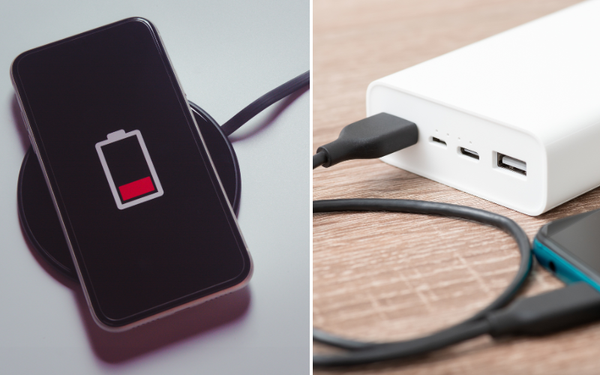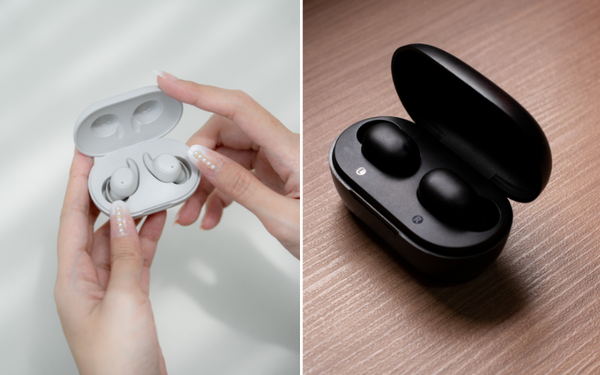Choosing your first electric guitar? Focus on comfort, sound, and a price that doesn’t sting. Whether it’s the solid-body power for rock’n’roll or the mellow vibe of a semi-hollow for jazz, this article steers you through finding that ideal match. We’ll cover essential features, popular brands for rookies, and tips to secure a guitar that ticks all the right boxes without excess cost. Start your musical adventure on the right note – with a guitar that fuels your passion and doesn’t bleed your wallet. So, what should your first electric guitar be? Read on to find out!
Key Takeaways
- The ideal electric guitar for beginners depends on the type of music they wish to play, comfort, and desired sound, with solid-body guitars being preferred for rock, semi-hollow for jazz and blues, and hollow-body guitars for jazz and country genres.
- Important brands to consider for first-time electric guitar buyers include Fender, Squier, Gibson, Epiphone, PRS, and Yamaha, with models varying in terms of affordability, quality, and features suitable for different music styles.
- Key components that affect an electric guitar’s playability and tone include pickups, neck profile, fretboard, and bridge system; always test these elements for comfort and sound quality before purchasing, and don’t hesitate to seek expert advice.
Understanding Electric Guitar Types
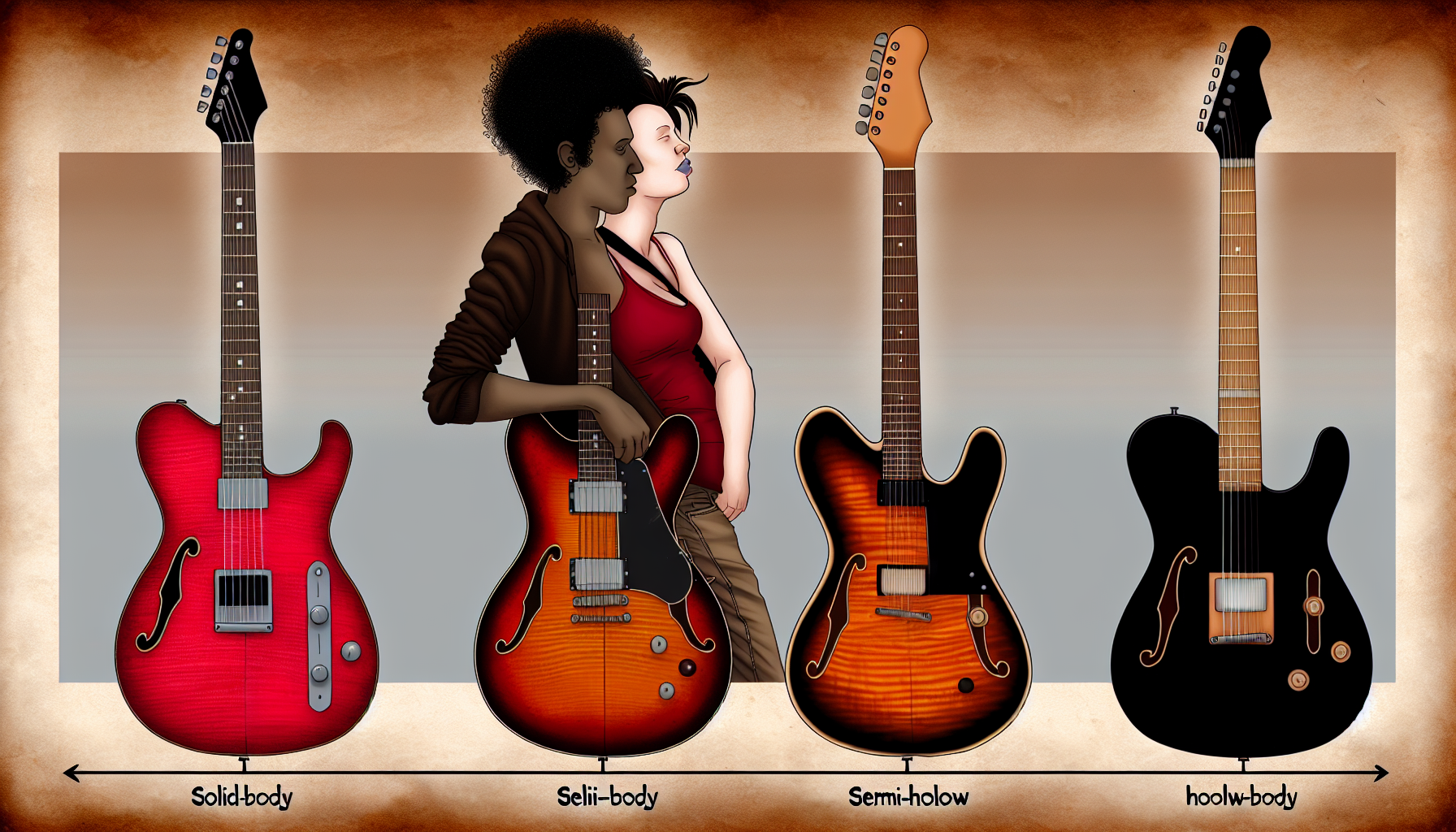
The process of selecting the right electric guitar for your first electric guitar can be likened to finding a new companion. The ideal instrument will harmonize with your style, enhance your music’s ambiance, and feel like a natural extension of your hands. Electric guitars are available in three primary body styles: solid-body, semi-hollow, and hollow-body. Each style presents a distinctive tone and playing experience, with tonal characteristics influenced by a variety of tonewoods like maple, mahogany, and alder. The shape and body design influence how comfortable the guitar is to play, which in turn can affect a player’s ability to perform.
We will now examine each type in detail, beginning with solid-body guitars.
Solid-body Guitars
Solid-body guitars, with their dense construction, are the choice for music genres where sustain is crucial. Rock, pop, and metal genres are well-served by solid-body guitars. The density of the wood used in their construction contributes to their increased sustain and resistance to feedback, giving them a tighter low end. Artists across a spectrum, from John Mayer’s mainstream appeal to Tony Iommi’s heavy metal prowess, frequently choose solid-body guitars.
Thus, if energetic rock sounds and high-powered performances are what you aspire to, a solid-body guitar might be your ideal first instrument.
Semi-hollow Guitars
The semi-hollow guitar is an artist’s canvas. These guitars offer:
- A vibrant, organic tone that harmoniously blends the brightness of a solid-body with the warmth typical of an acoustic guitar
- Lightweight and comfortable for extended play
- A center block that significantly reduces unwanted feedback
The timeless design and elegant curves of semi-hollow guitars make them visually appealing. If you’re gravitating towards jazz, blues, or classic rock, the rich and versatile sound of a semi-hollow guitar would be a great match for you.
Hollow-body Guitars
Hollow-body guitars, affectionately known as “jazz boxes,” are traditionally used for jazz, blues, and country genres. They provide a very open and natural tone, capturing both the string resonance and the hollow body’s interior. Their larger body size and ‘boxy’ design contribute to their rich sound.
If you’re drawn to vintage tones and the classic charm of the jazz era, a hollow-body guitar, one of the popular musical instruments, could be your ideal first instrument.
Top Brands for First-time Buyers

Just as there are different types of guitars, there are also numerous guitar brands each offering unique features and attributes. As a beginner, you would want to start with a brand that offers a blend of quality, affordability, and a reputation for catering to first-time players. We will now consider a few of the leading brands that beginners often choose:
- Fender
- Squier
- Gibson
- Epiphone
- PRS
- Yamaha
Fender and Squier Guitars
Fender is a leading guitar brand trusted by musicians worldwide, offering a variety of fender guitars to suit different styles and preferences. Its subsidiary, Squier, offers more affordable instruments, making it a great choice for beginners and those on a budget. The Fender Stratocaster, known for its tonal versatility and playability, is favored in blues, while the Fender Jazzmaster offers an edgier sound for indie and alternative genres.
Squier caters to beginners with models like the Bullet Stratocaster HT and the Affinity Series Stratocaster HH, which are celebrated for their affordability and classic Stratocaster tone. Fender and Squier are excellent options if affordability and versatility are your primary considerations for your first guitar.
Gibson and Epiphone Guitars
Gibson and Epiphone are synonymous with rock and heavy music. The iconic Gibson Les Paul is known for its large, energetic tone that suits rock, blues, pop, and jazz. Epiphone offers several accessible Les Paul models like the Les Paul Studio, ideal for heavy metal, and the affordable Les Paul SL for a diversity of genres.
The Epiphone SG-Special VE provides a more budget-friendly option for beginners, with an all-mahogany body and signature humbuckers for a classic rock tone. If rock and heavy music are your passion, Gibson and Epiphone guitars could be your perfect match.
PRS Guitars
PRS guitars, crafted by Paul Reed Smith, are known for their high-quality craftsmanship and versatility. The PRS Custom 24, for example, merges the characteristics of Fender and Gibson guitars, showcasing PRS’s commitment to high-quality craftsmanship and versatility in adapting to multiple music genres.
The PRS SE Standard 24 is a favorite among beginners for its quality craftsmanship and affordability, offering the PRS experience without a high-end price tag. If you’re looking for a first guitar that is versatile and high quality, PRS guitars are a perfect choice.
Yamaha Guitars
Yamaha offers the best beginner guitar models known for their ease of play and affordability. The Yamaha Pacifica 112V and Revstar Element RSE20 are excellent guitar models that cater to beginners with their ease of play and affordability.
The Yamaha Pacifica 112V offers phenomenal value and versatility with an HSS pickup configuration, suitable for various music styles. If you’re a beginner looking for an easy-to-play and affordable guitar, Yamaha is a brand worth considering.
Key Components to Consider
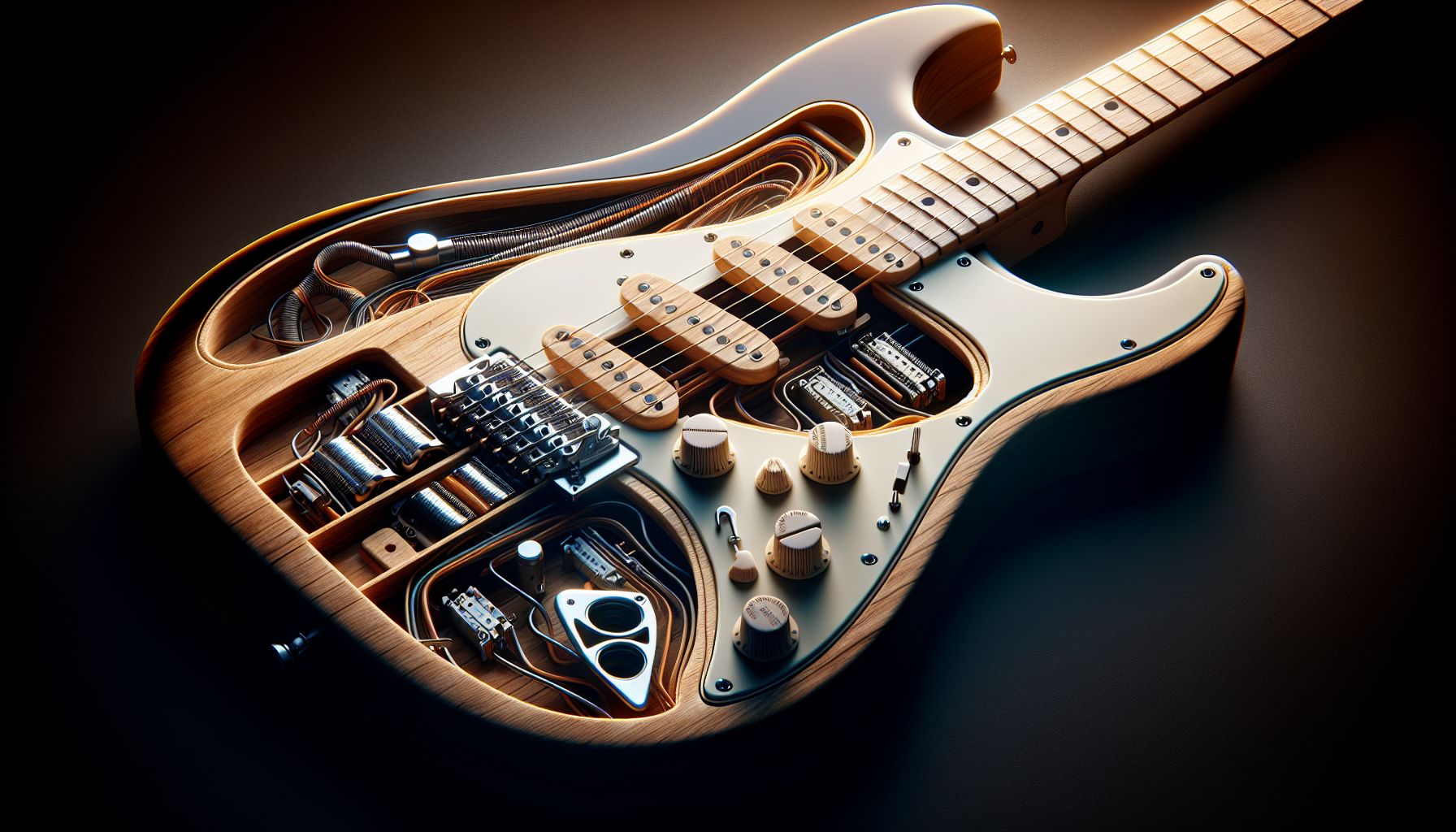
Comprehending the key elements that influence the construction and quality of an instrument is critical when selecting your first electric guitar. These include elements like:
- Pickups
- Neck profile
- Fretboard
- Bridge
Each of these components plays a significant role in determining the sound, comfort, and playability of the same instrument, your guitar.
We’ll now detail each of these components.
Pickups
Pickups are like the voice box of a guitar, shaping its sound and tone. Different types of pickups provide distinct tonal bases. For instance, an HSS Stratocaster is versatile due to its mix of single coil pickups and humbucker pickups, while the PRS SE Standard 24’s humbuckers offer tonal versatility by splitting into single coils.
Adjusting the pickup height or amp EQ can significantly change the tone, and matching the output power of pickups to the amp and desired sound is key, especially for high-gain tones. Hence, think about the pickups and try out various tones and sounds when selecting your first guitar.
Neck Profile and Fretboard
The neck profile and fretboard of a guitar have a significant impact on playing comfort. Necks come in various shapes and thicknesses, with each shape providing a different comfort level to complement the player’s hand size and playing style. The most popular guitar neck profiles are:
- ‘C’
- ‘D’
- ‘U’
- ‘V’
Some players might prefer ‘U’ or ‘V’ shaped necks depending on their hand size and the style of music they play.
Ensuring the neck is straight and that the fretboard is easy to navigate are crucial for avoiding difficulties and enhancing overall playability.
Bridge and Tremolo System
The bridge and tremolo system on a guitar play a significant role in tuning stability, string tension, and sustain. The bridge on an electric guitar connects the strings to the body and may include a tremolo system for pitch manipulation; the two primary bridge types are tremolo bridges and stoptail bridges. Bridge saddles that are adjustable play a critical role in correcting intonation issues, and recent innovations like swiveling saddles have enhanced intonation accuracy without sacrificing bridge stability.
So, when choosing your first guitar, pay attention to the bridge and tremolo system, as it can greatly affect your playing experience.
Budget and Quality Balance
Balancing your budget with the quality of your chosen electric guitar is a crucial consideration for beginners. A good starting point for beginners is to consider electric guitars priced within the $100 to $400 range. As you progress, you may consider intermediate guitars, which typically range from $400 to $900. Remember, your budget should reflect the anticipated time you plan to spend playing - think of it as an investment in hours of enjoyment. In the end, it’s about finding an instrument that offers you the best value for your money.
New vs. Used Guitars
When it comes to buying your first guitar, you might be torn between buying a new or used one. Here are some factors to consider:
- New guitars come with a warranty and quality assurance from trusted manufacturers, making them a safer choice for beginners.
- A used guitar can offer good value, especially if you’re not ready to make a large investment.
- However, when buying used, it’s crucial to ensure the guitar is in good condition, as compromised quality can affect sound and playability.
Whether you choose new or used, the most important thing is that the guitar meets your needs and preferences.
Essential Accessories for Beginners

Apart from the beginner guitar itself, there are several accessories that beginners should consider investing in. These include:
- An amplifier and a connector cable to achieve the full sound potential of their electric guitar
- A guitar strap for comfortably securing the guitar while playing
- Spare guitar strings to replace any that may break
- A guitar stand or hanger for safely storing the guitar when it’s not in use
We’ll now examine each of these accessories in depth.
Amplifiers
An amplifier is essential for electric guitarists to project their sound. For home practice, a 10 to 15 watt amplifier is sufficient, with models like the Blackstar Fly 3 being popular among beginners for bedroom practice. Amplifiers with features such as multiple channels for different tones, built-in digital effects for tone experimentation, and options like the Positive Grid Spark Mini and Boss Katana-100 can offer versatile sounds and practice features.
Keep in mind that the appropriate amplifier can significantly boost your electric guitar’s sound.
Guitar Cables and Picks
High-quality guitar cables and picks are vital for ensuring optimal sound and playing comfort. A high-quality guitar cable is necessary to connect the guitar to an amp without adding unwanted noise. The length of a guitar cable should be kept as short as possible to minimize noise, with 25 feet being a practical maximum length for most situations.
Guitar picks come in various shapes, thicknesses, and materials, all of which can influence playing comfort and tone. Dunlop’s Tortex range offers a wide selection of picks suitable for beginners.
Gig Bag or Case
Your guitar is an investment, and as such, it’s important to protect it. A gig bag or case is essential for protecting the guitar during transportation to lessons, jams, or band practice.
Investing in a gig bag or case is important to ensure the longevity of your guitar. Therefore, don’t forget to include a robust gig bag or case on your shopping list as you search for your first electric guitar.
Tips for Testing and Buying Your First Electric Guitar
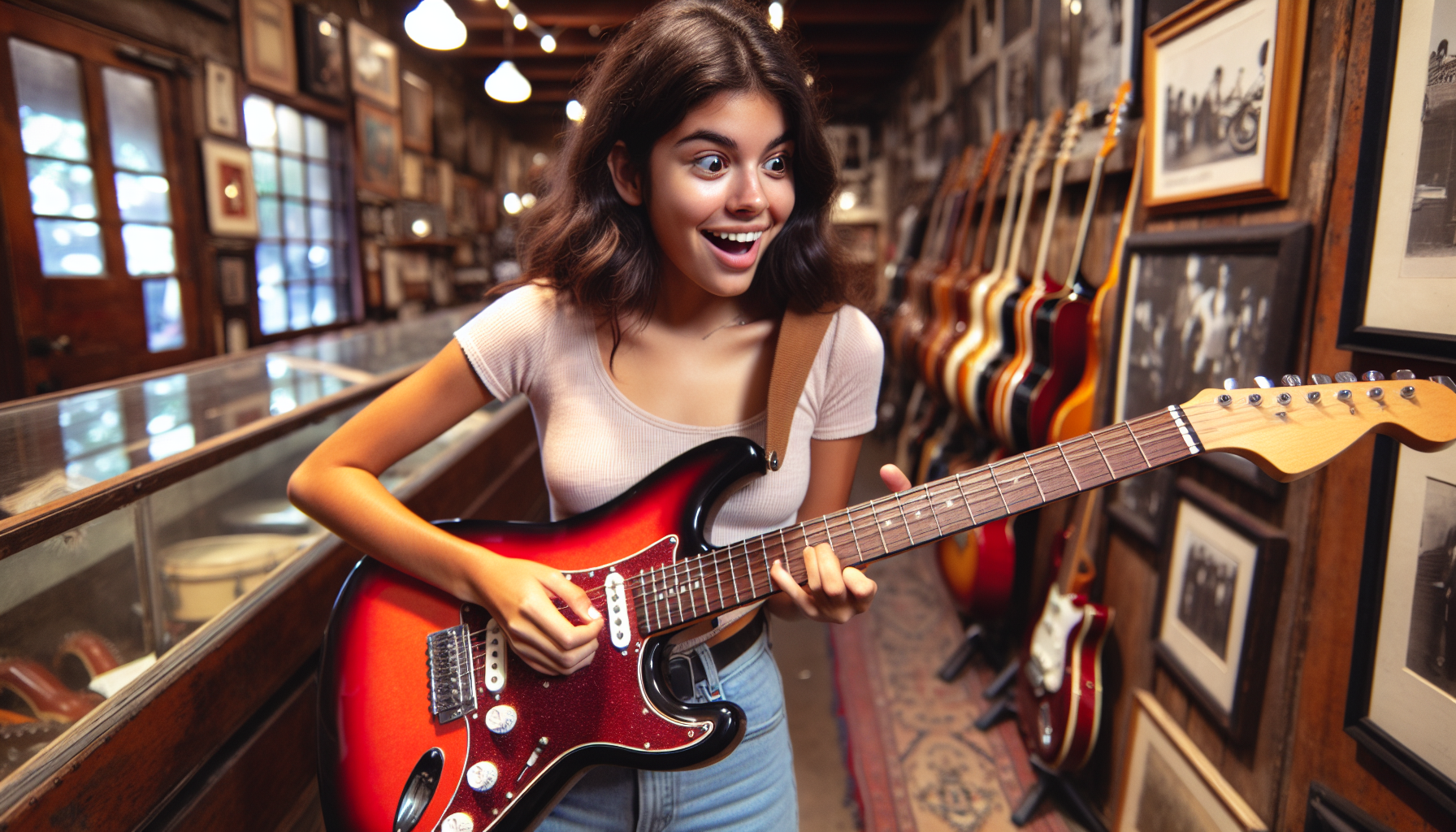
Now that you have a better understanding of the types of electric guitars, the top brands for beginners, the key components to consider, and the essential accessories you’ll need, it’s time to talk about some expert tips for testing and buying your first electric guitar.
These tips will focus on comfort, playability, sound, and tone. Taking this into account, we’ll delve into these tips to aid your decision-making process.
Comfort and Playability
When testing a guitar, comfort and playability are crucial factors to consider. The comfort and speed of playing are highly influenced by selecting the right neck profile which is based on personal preference and hand size. An ergonomic guitar body with comfortable contours can have a significant impact on the player’s comfort. Playing comfort should be assessed in both sitting and standing positions to ensure the guitar feels good in various playing contexts.
To effectively evaluate playability, beginners should play familiar music on the guitar as it allows them to concentrate on the instrument’s feel rather than on the music itself.
Sound and Tone
The sound and tone of a guitar are equally important when testing and buying your first electric guitar. Pickups play a critical role in shaping the guitar’s tone. Experimenting with different pickup positions and manipulating the volume and tone knobs can reveal the diverse sounds a guitar can achieve. Sound quality is ultimately subjective, and players should trust their own ears when judging if they like the sound of a guitar.
Sustain, which is how long a note lingers after being struck, is a key component of a guitar’s sound that should be considered by beginners.
Expert Assistance
Finally, the importance of expert guidance should not be underestimated when purchasing your first electric guitar. Seeking the assistance of a knowledgeable salesperson or an experienced musician can enlighten beginners on the kind of sound they prefer and elucidate the subtle differences in guitar tones. An expert can critically evaluate the unplugged sound of an electric guitar to judge its construction and inherent acoustic qualities. Experienced guitarists or guitar technicians can spot potential issues with the guitar during testing, including setup or maintenance needs that may otherwise go unnoticed by a novice. So, don’t be shy to seek expert advice.
Summary
Choosing your first electric guitar is an exciting journey filled with learning and discovery. From understanding the different types of guitars and their key components, to considering your budget and investing in essential accessories, every step brings you closer to finding the perfect instrument that resonates with you. Remember, the best guitar for you is not necessarily the most expensive one, but the one that feels right in your hands, sounds good to your ears, and inspires you to play more. So, go ahead and take the plunge. Your musical journey awaits!
Frequently Asked Questions
How much should a beginner electric guitar be?
A good beginner electric guitar should cost between $199 and $399, while intermediate instruments range from $400 to $799. Premium professional-quality recording and gigging guitars can be found in the $800-$1,500+ range. Prices above $1,500 are for the highest-quality, high-end instruments.
What type of electric guitar should a beginner use?
For a beginner, a solid-body electric guitar is the recommended choice. It offers versatility and is generally easier to play. Consider factors like neck shape and fretboard width when selecting a model to ensure playability.
What are the different types of electric guitars?
There are three basic types of electric guitars: solid-body, semi-hollow, and hollow-body. Each type has unique tonal characteristics and is suitable for different music genres. Choose the type that best fits your preferred playing style and music genre.
What are the key components to consider when buying an electric guitar?
When buying an electric guitar, it's important to consider pickups, neck profile, fretboard, and bridge as they significantly impact the sound and playability. Date not needed.
Should I buy a new or used guitar?
If you're a beginner, a new guitar with a warranty and quality assurance might be a safer choice, while a used guitar can offer good value if you're not ready to make a large investment. Consider your budget and preferences before making a decision.
You Might Also Like...






